INTERVIEW WITH
MICHAEL KENNA

Michael Kenna is a contemporary landscape photographer known for his black and white images of natural and man-made environments. He is best known for his serene and minimalist compositions that often feature long exposures and a high degree of technical precision. Kenna's photographs are characterized by their ability to convey a sense of stillness and tranquility, and have been widely exhibited and collected internationally.
Kenna's work is often compared to that of the 19th century British photographer, Henry Fox Talbot, and the 20th century American photographer, Ansel Adams, due to his focus on the natural world and his use of long exposures to capture light and shadow. His photographs are also influenced by his deep appreciation for the work of Japanese photographers, such as Hokusai and Hiroshige. Kenna's work has been widely recognized and he has won numerous awards and honors, including being made a member of the Royal Photographic Society
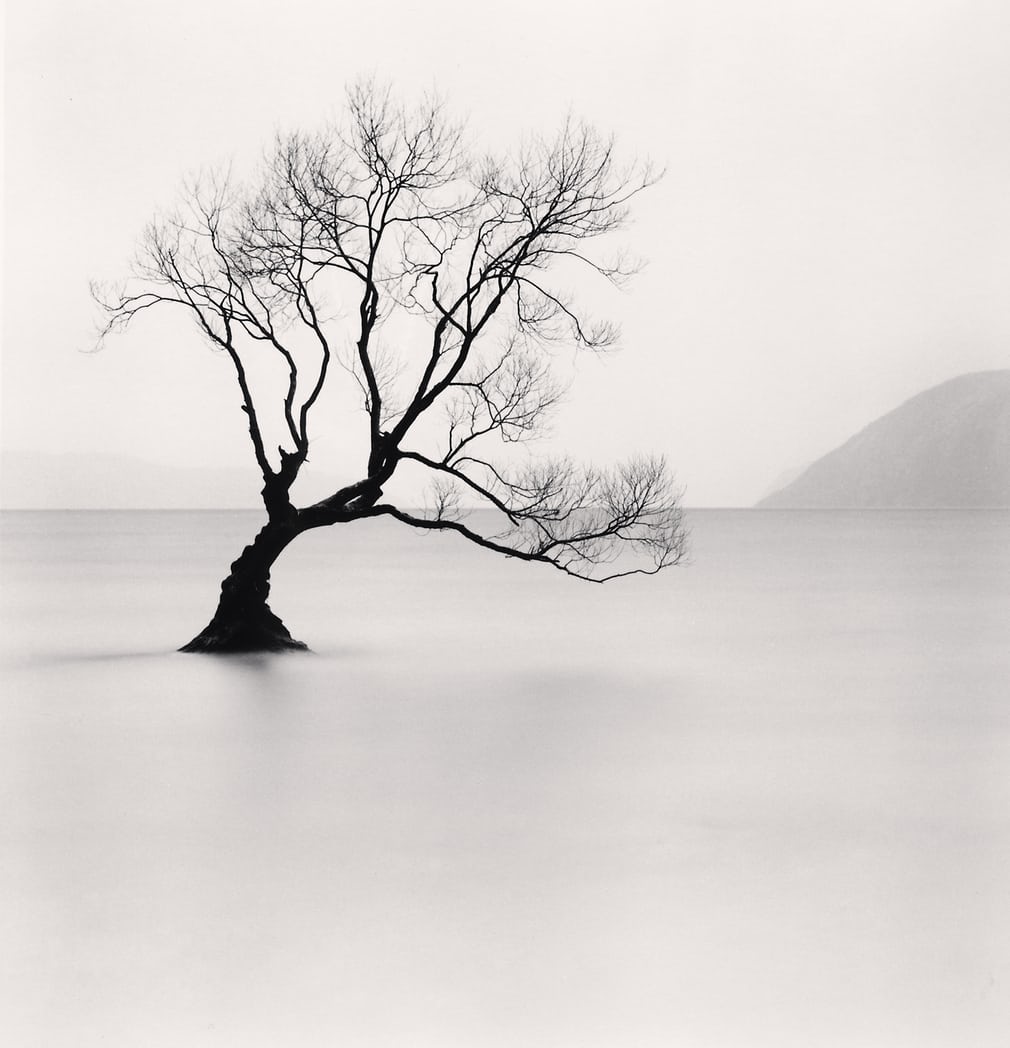
© Wanaka Lake Tree, Study 1, Otago, New Zealand, 2013 | Ira Stehmann
We admire Michael Kenna as a photographer. However, we also know about your background studies of art and a possible career as a painter. Have you ever thought what your life would be like as a painter?
I am certain that life would be extremely fascinating if I had spent my time being a painter, or a musician, or a poet, or buddhist monk, or many other things. I have often wished that I had several clones so that I could experience other facets of the myriad of opportunities in this world. It takes years of concentrated study and application to be proficient in photography. Certainly the same is true in painting. I would love to have explored that avenue of creative expression. Maybe there is still time. Cartier Bresson spent many years of his later life drawing. But, as Geoffrey Chaucer famously wrote seven centuries ago: “Time and tide wait for no man.” I rather doubt that I will be the exception!
At present, with the use of digital edition, photographs sometimes become closer to paintings. We believe some of your works have this property. They have a dreamy look, reminiscent of some exquisite paints from the past. On the other hand, some paints can make the viewer think they are photographs. What are your thoughts about this? Do you believe there is a fundamental difference between painting and photography? What is the boundary between them?
I have no answers to this question, only thoughts. I suppose the fundamental boundary used to be that photography was tied to reality. In general, what was photographed, actually existed, so we had a natural tendency to believe what we saw. Of course, the digital revolution has changed all that. In my view, the boundaries are now blurred to the point where it is often not possible to know if a work of art is a painting or a photograph. We might therefore question whether it matters. Beauty is, after all, in the mind (and heart and soul...) of the beholder. Personally, I have found that a photograph made in a fraction of a second might move me more than a painting made over days and weeks. Yet, if I consider comparing, for example, a painting by Michelangelo, with a silver gelatin print, it seems to be act of futility. I believe one should relate and react to works of art on the basis that each work is unique. I don't think we need to make general rules.
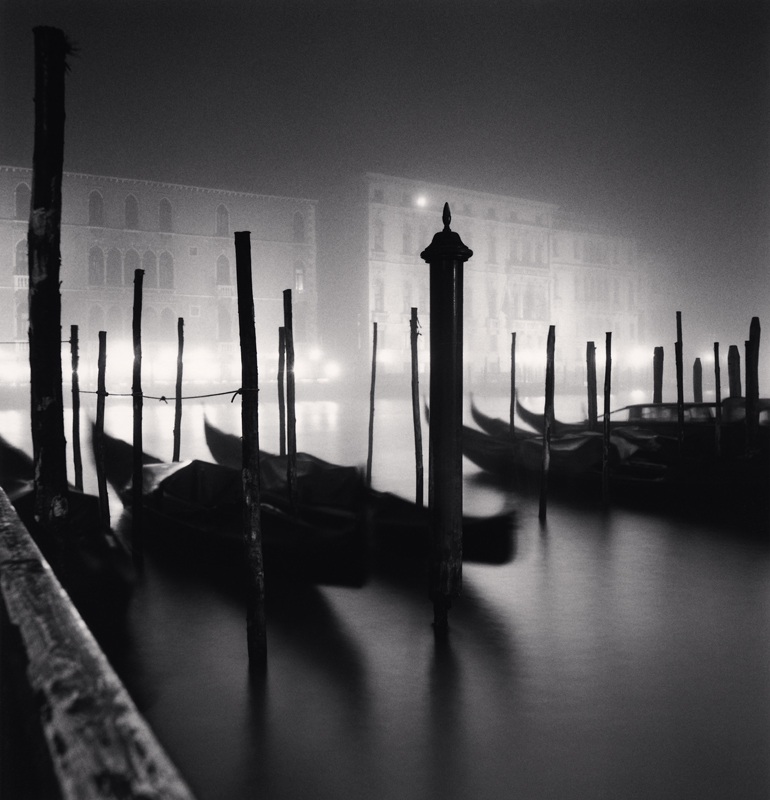
© Campo San Vio Viewpoint, Grand Canal, Venice, Italy. 2007
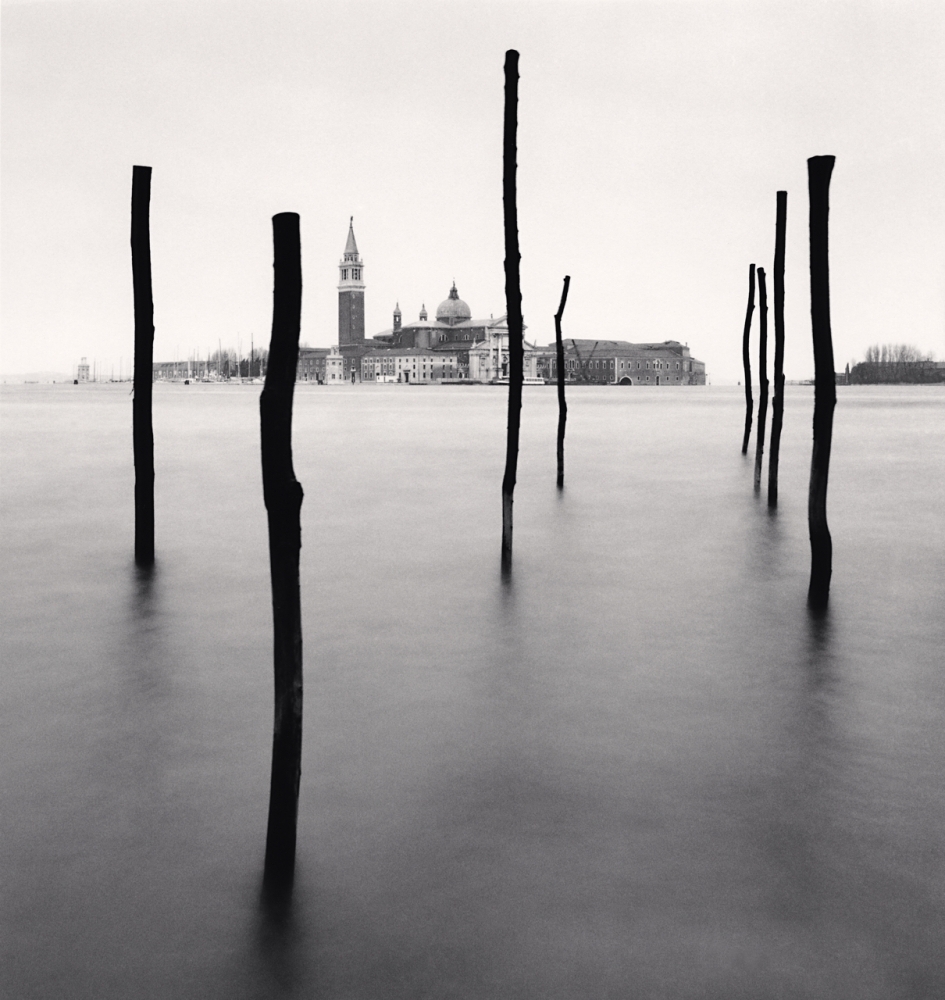
© Basilica and Eight Poles, Venice, Italy. 1990
All great photographers, like many outstanding representatives of other disciplines, have above an average commitment to their work and an undying belief in what they are doing. However, this might only come in periods of inspiration. Can you tell us where your passion comes from? What inspires Michael Kenna?
Life, and the constant awareness that it can be over in the blink of an eye, inspires Michael Kenna. Quite simply, I want to thoroughly embrace every second of my existence. I don’t pretend to understand what this life is about. There are innumerable philosophies and ideologies, and all kinds of perspectives and persuasions, that I could study and explore if I chose to. However, the longer I live and the further I travel, the more I have come to some basic conclusions. I believe that we all have the simple, (and sometimes incredibly complicated), responsibility to live to our highest potential. I bring this belief to my photography, (as well as everything else I do), and it has ensured that there is rarely a moment where I do not feel inspired and passionate. Except, perhaps when I have do my taxes for the previous year...
Many of your artistic works are shot in well-known places such as England, France and Italy to name a few. Do you believe famous places give an advantage to the photographs?
I photograph whenever and wherever I can. You are quite correct in the observation that some photographs are made of famous places. Place recognition surely helps the images. However, if a place is well known, perhaps it is not so interesting for viewers. If a place is easily accessible, perhaps it has also been well photographed by others. There are advantages and disadvantages to photographing famous places. My conclusion is that it is not worth worrying about.
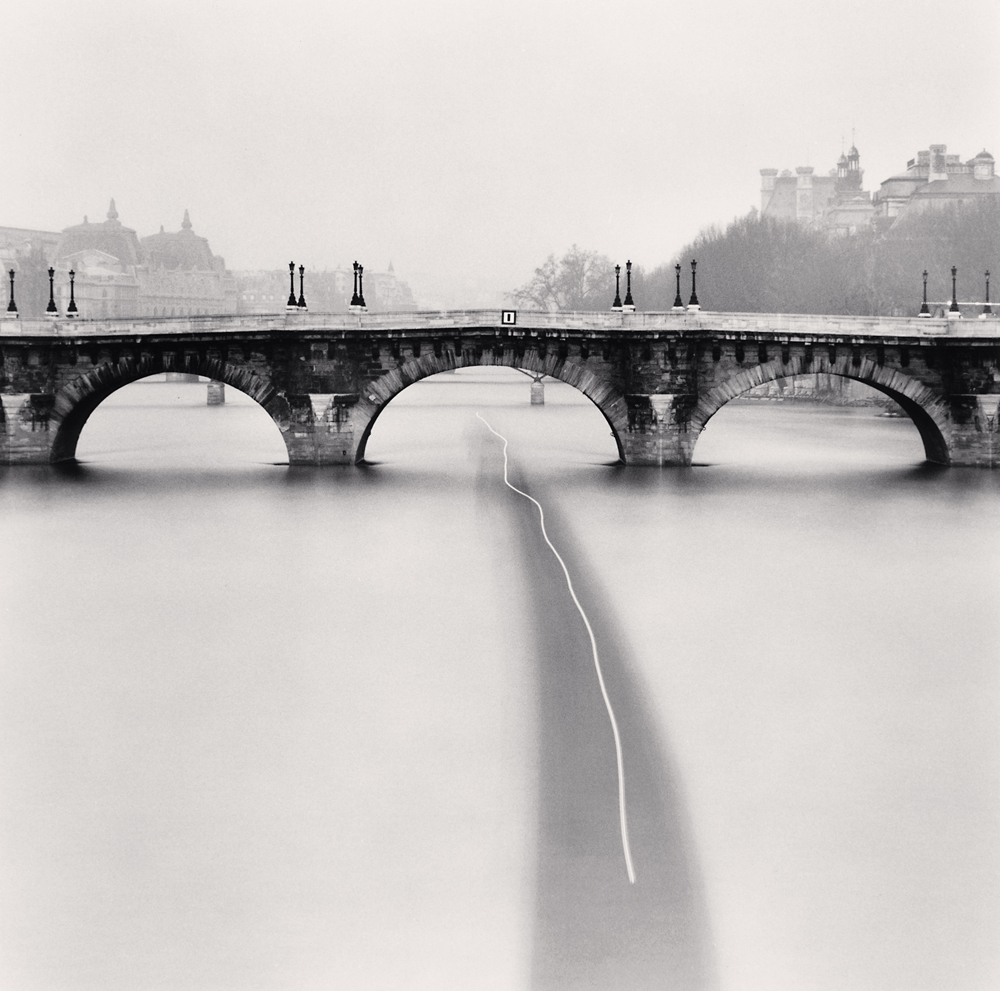
© Barge Passing, Paris, France, 1988
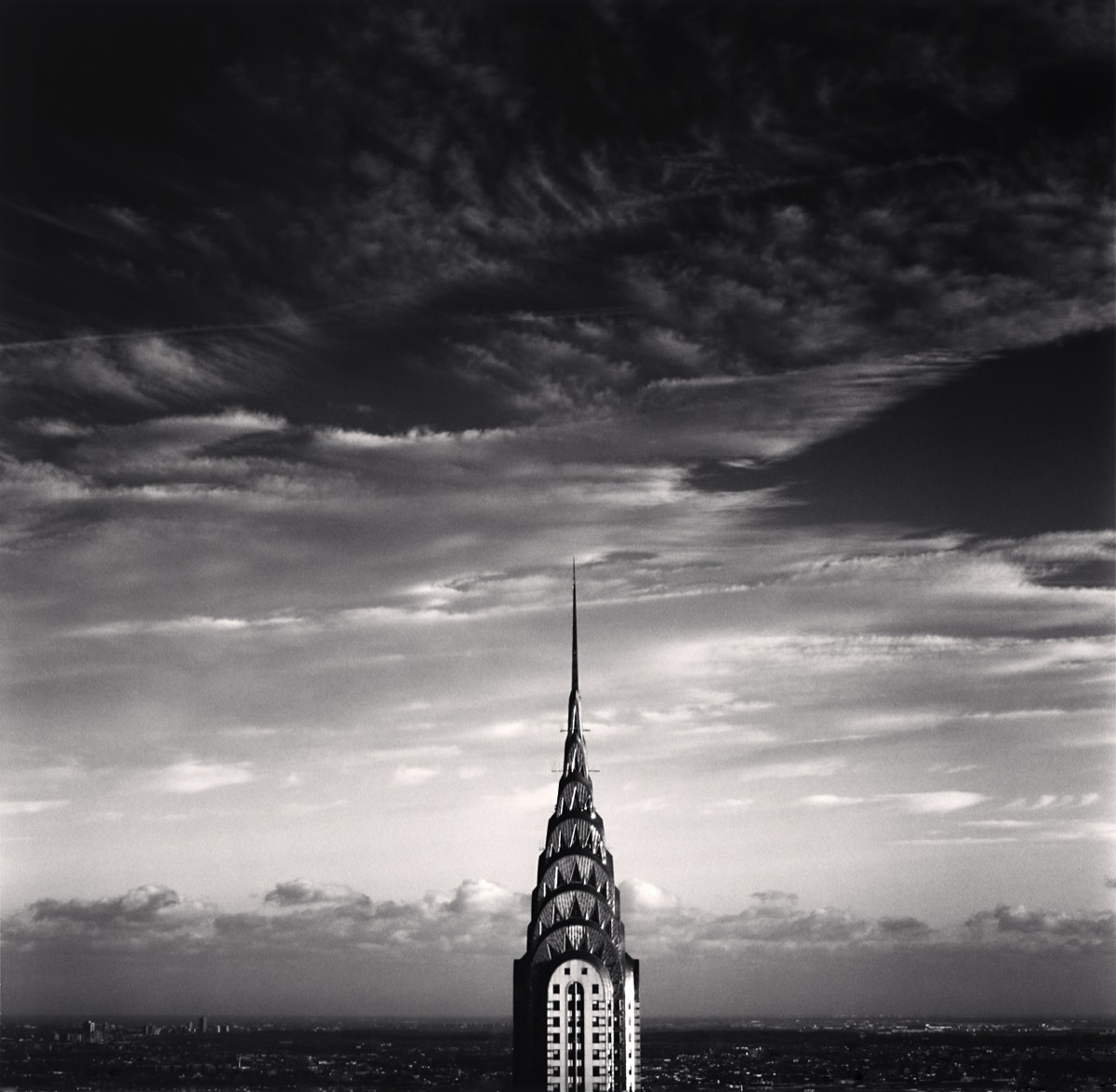
© Chrysler Building, Study 3, New York City, USA, 2006
We love the works you did in Abruzzo, Italy. The medieval ruins, ancient villages and the countryside come alive in all of your captures. Can you tell us about your experience in this beautiful place? Would you consider another project in Italy?
I have photographed in Italy many times over many years and anticipate continuing to photograph and travel there for years to come. My first visit to Abruzzo was in November, 2015. I was so impressed that I returned for three more visits, each for about a week. Abruzzo seems to be relatively unknown compared to many other places I have visited in Italy. It is not packed with tourists - which greatly helps me with the sort of unpopulated photographs that I prefer to make. Abruzzo’s landscape is incredibly diverse. Primo Levi has aptly described the region as “forte e gentile” (strong and gentle). In some places, the land is exceedingly wild and mountainous, whereas in others, it is domestic and pastoral. Hill towns, castles and churches proliferate. Vineyards and olive groves are ubiquitous. Eighty miles of Adriatic shoreline provide endless points of view. In my opinion, the most difficult part of photographing Abruzzo is choosing from its vast abundance of rich and diverse subject matter. One has to be patient to best enjoy the many facets of this splendid place.
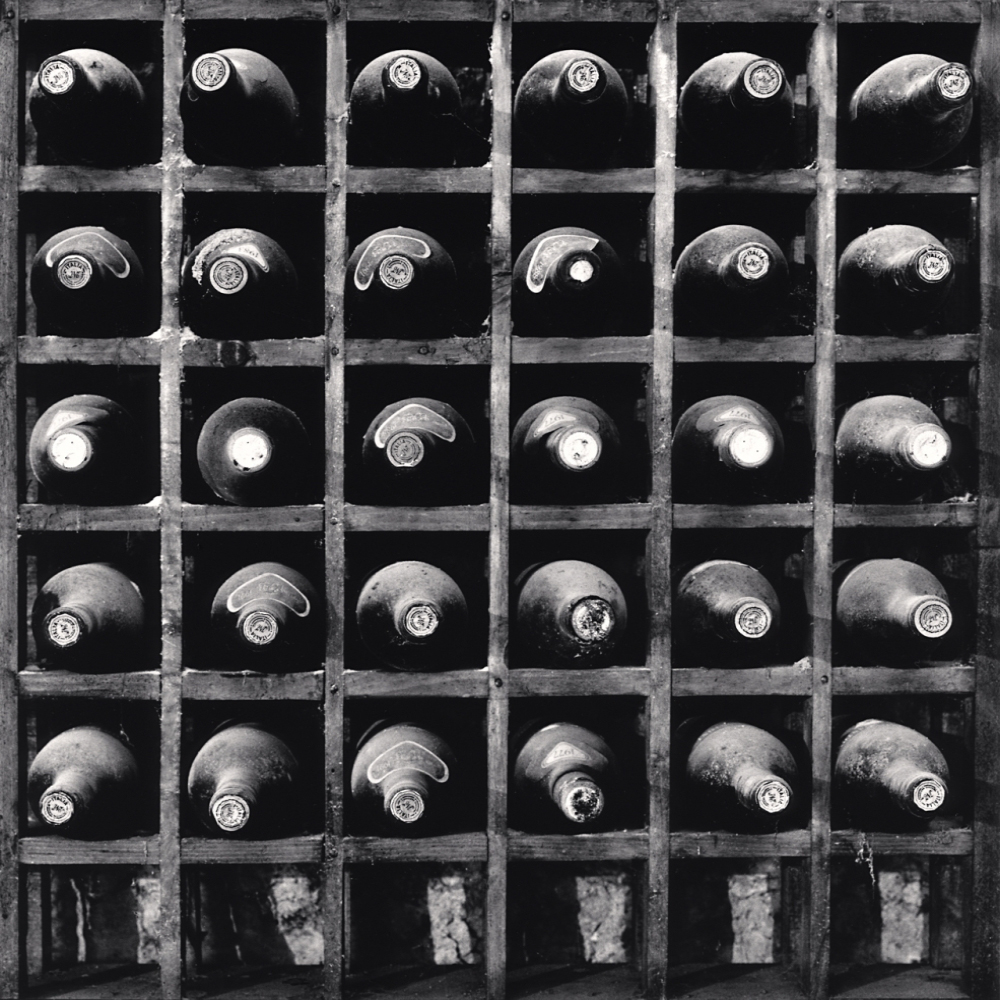
© Thirty Bottles of Wine, Pietrantonj Cantina, Vittorito, Abruzzo, Italy. 2016
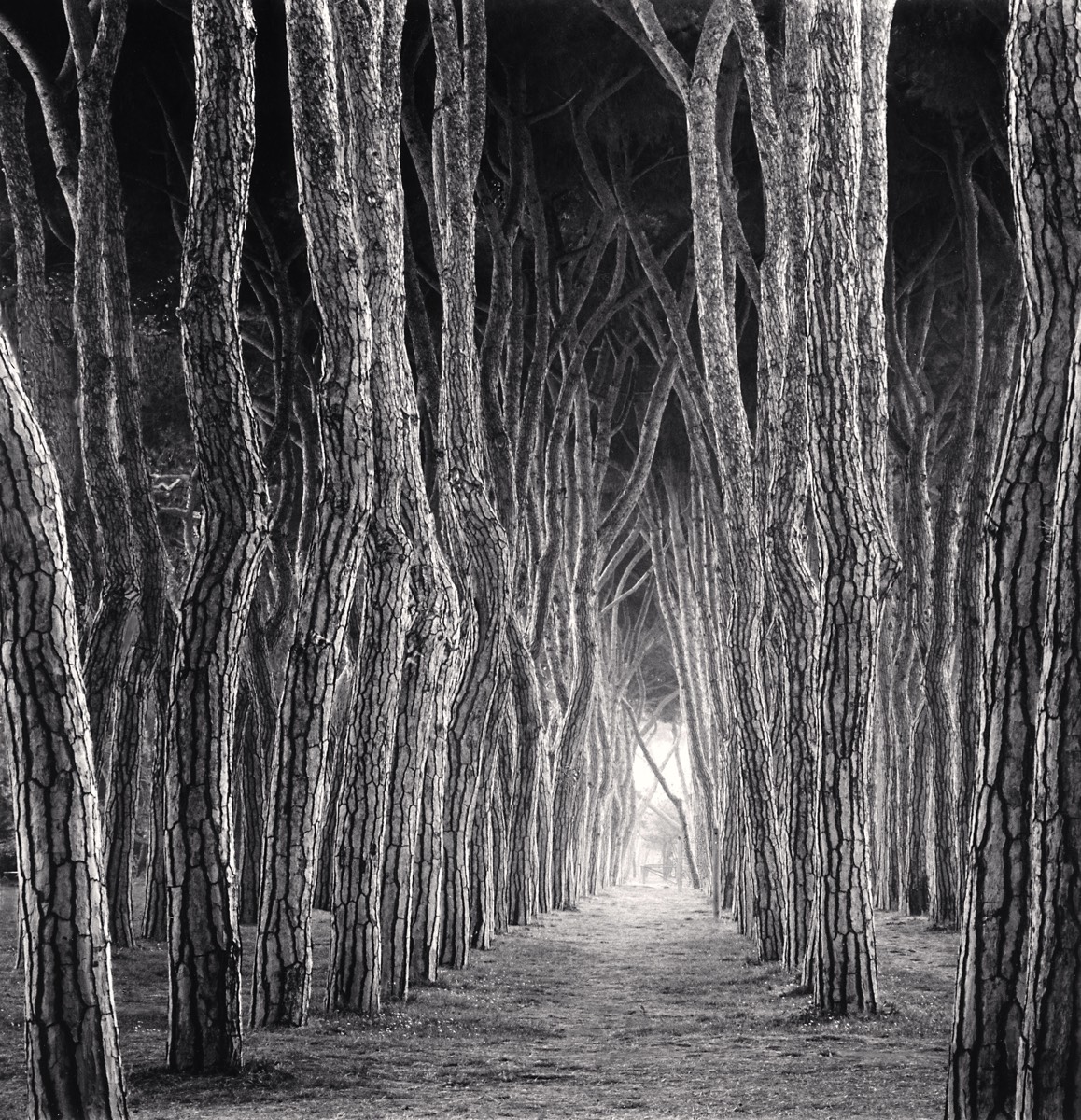
© Stone Pine Tunnel, Pineto, Abruzzo, Italy. 2016
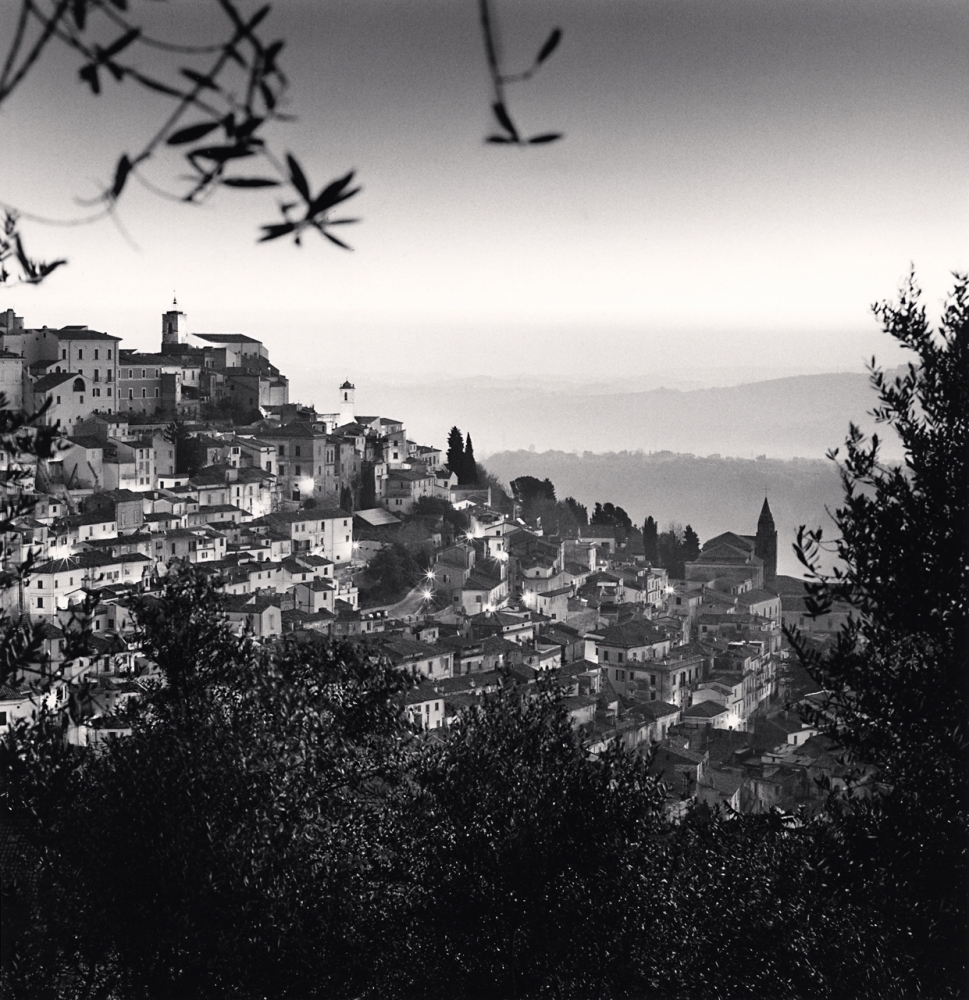
© Dawn Light, Loreto Aprutino, Abruzzo, Italy. 2016
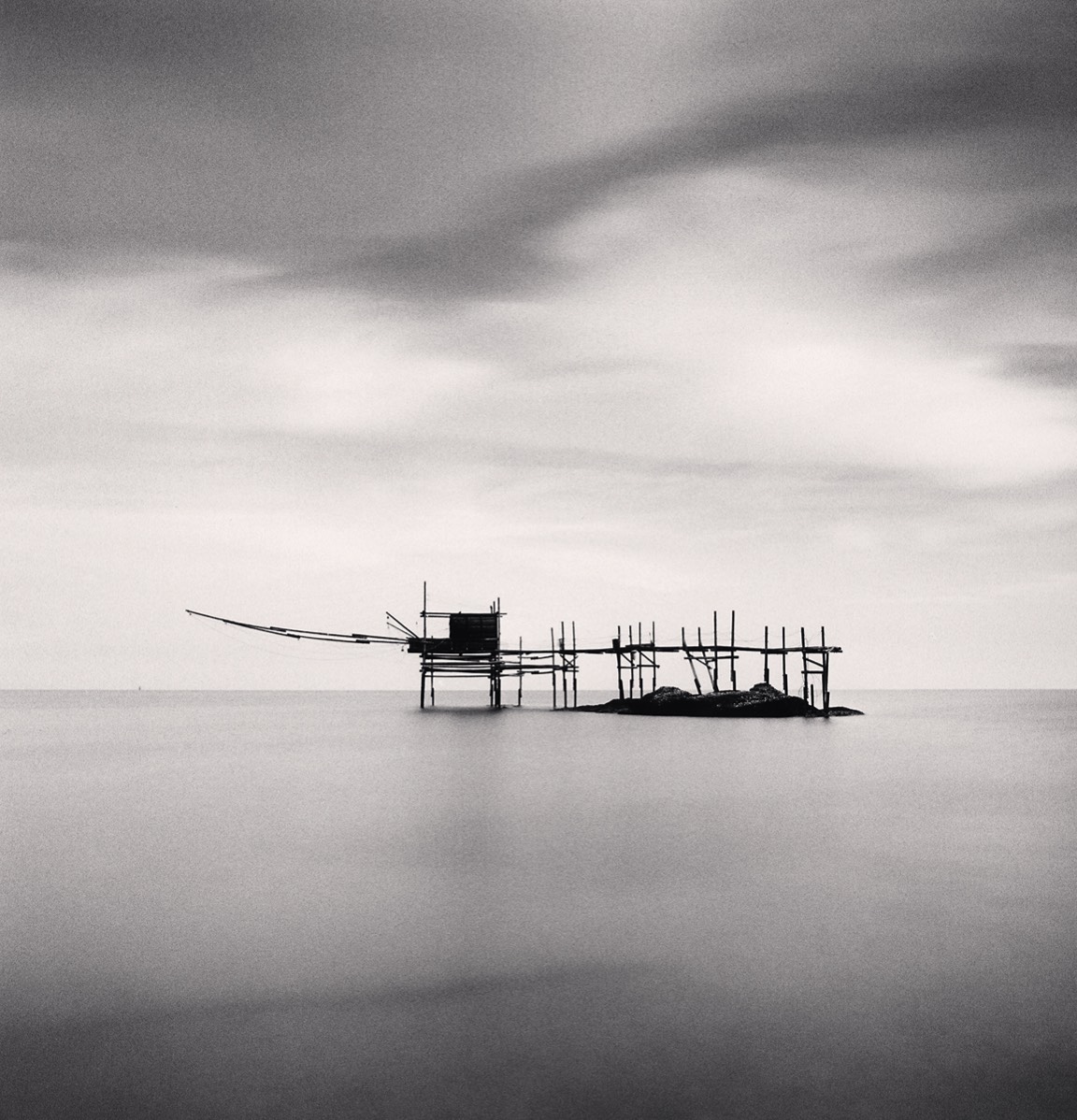
© Trabocco Punta Aderci, Study 2, Vasto, Abruzzo, Italy. 2016
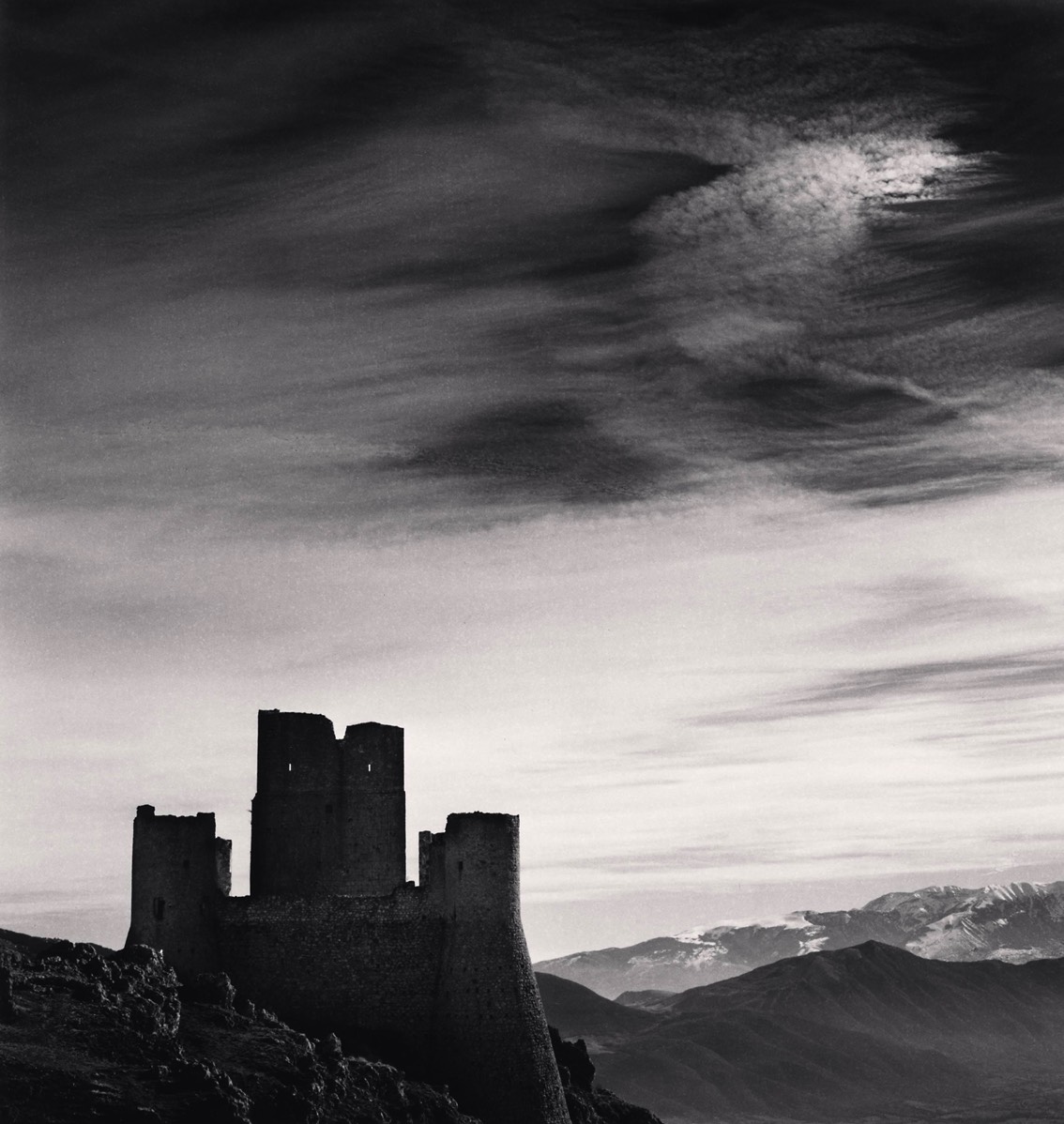
© Castle and Sky, Rocca Calascio, Abruzzo, Italy. 2016
Photographs often contain multiple stories, emotions and feelings. Do you ever find yourself wondering how the world would look if it was a photograph?
I suppose that I spend most of my time imagining the world as a photograph. It is not easy, or perhaps even possible, to have defined borders of when one is a photographer and when not. Part of my mind is constantly placing the world in rectangles, reducing it to black and white, and imagining it in two dimensions. I suppose that a musician must be constantly listening and composing, a poet constantly playing with words and sentences. As the Greek philosopher informed us some time ago: "We are what we repeatedly do. Excellence, then, is not an act, but a habit."
We admire the exquisite level of detail in your works. What photography technique do you prefer or are more comfortable with? How important is the equipment?
Hasselblad medium format cameras have been my chosen means of photographic expression for the past thirty years. I work with silver materials, film cameras and do all my own darkroom printing. I do not use the digital medium. The following may be a bit technical for some of your readers, but I’ll attempt to explain my usual working set-up for a typical photographic expedition. Normally, I take two camera bodies, two viewfinders (a metered pentaprism and a waist level), two film backs, five lenses, a hand-held meter (chiefly for night exposures), a light-weight graphite tripod with ball socket head, and many cable releases (as I tend to lose them in the dark). I average 10-15 rolls of film a day. Everything has to fit into a backpack (except the tripod) as I walk, often for hours, when photographing and need to be able to work in all conditions without worrying about the equipment. These cameras have become old friends, familiar and easy to be with. They are fully manual with no fancy bells or whistles. They can function in extreme weather conditions and are generally reliable. I get a decent medium sized negative which I can print whole frame or crop as required.
Occasionally, I also use plastic Holga cameras which take the same film. These are comparatively light-weight and inexpensive. They are also quirky, whimsical and unpredictable - a few of the many reasons I love them. I am often pleasantly surprised by the unexpected results I get, as well as occasionally disappointed. Holgas, in my experience, have a habit of keeping you guessing - surprise and spontaneity are hallmarks of their images. Hasselblads and Holgas each have their pros and cons - I like both.
Ultimately, I believe the type of equipment a photographer chooses is relatively unimportant compared to vision and point of view. If we again compare photography with painting, it is a bit like asking a painter about which paints, brushes and canvases they use.
Achieving such amount of exposure is like producing a live photograph. How do you prepare for this kind of captures? Do they require a long preparation?
When I photograph I look for some sort of resonance, connection, spark of recognition. I try not to make conscious decisions about what I am looking for. I like what Garry Winogrand, a fascinating photographer, once wrote about “Photographing to see what something looks like photographed”. I don’t do any elaborate preparation before I go to a location. Essentially I walk, explore and photograph. I never know whether I will be in a location for minutes, hours or days. I have no idea ahead of time whether the exposures will be fractions of a second, a few minutes or many hours. Approaching subject matter for me is a bit like meeting a person and beginning a conversation. How does one know ahead of time where that will lead, what the subject matter will be, how intimate it will become, how long the potential relationship will last? Certainly, a sense of curiosity and a willingness to be patient to allow the subject matter to reveal itself are important elements in this process. Decisions about exposures are made when the subject is engaged. It should be noted that here have been many occasions when interesting images have appeared from what I had considered uninteresting places. The reverse has been equally true and relevant. One needs to fully accept that surprises sometimes happen and control over outcome is not always necessary or even desirable.
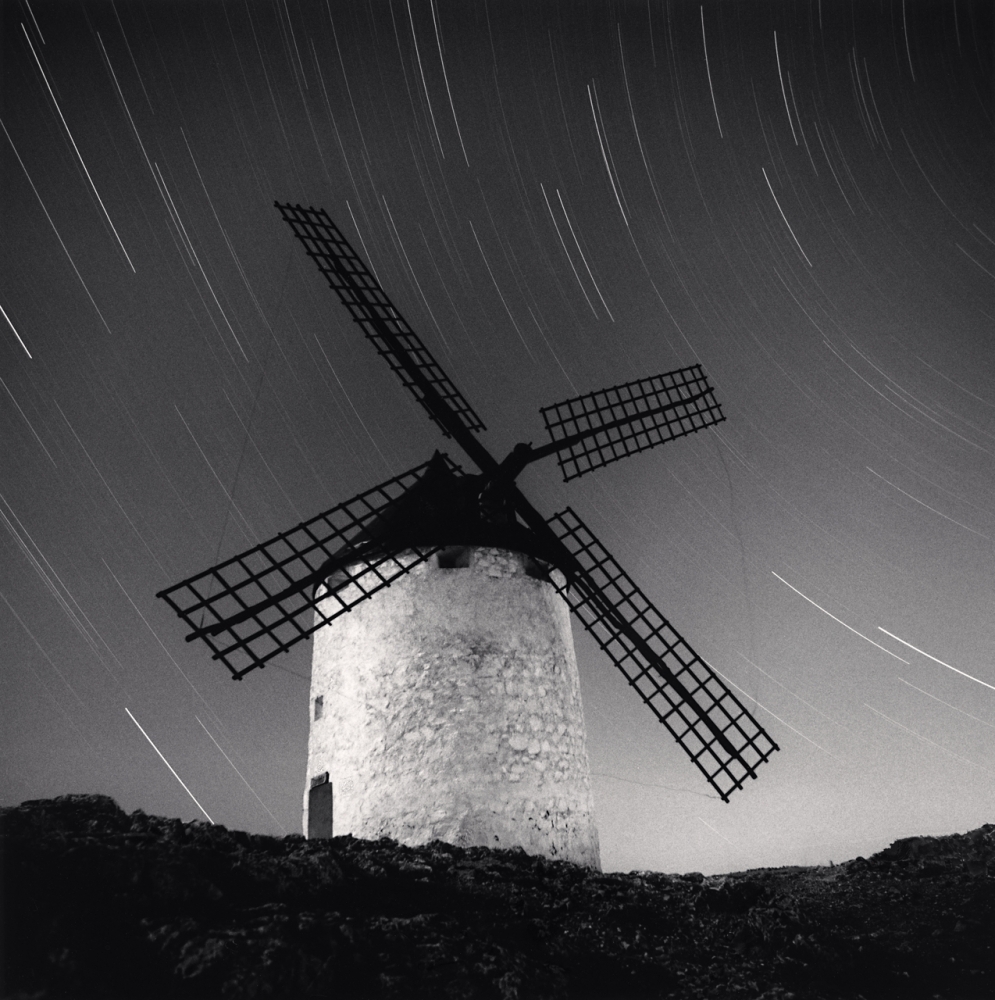
© Quixote's Giants, Study 7, Consuegra, La Mancha, Spain. 1996
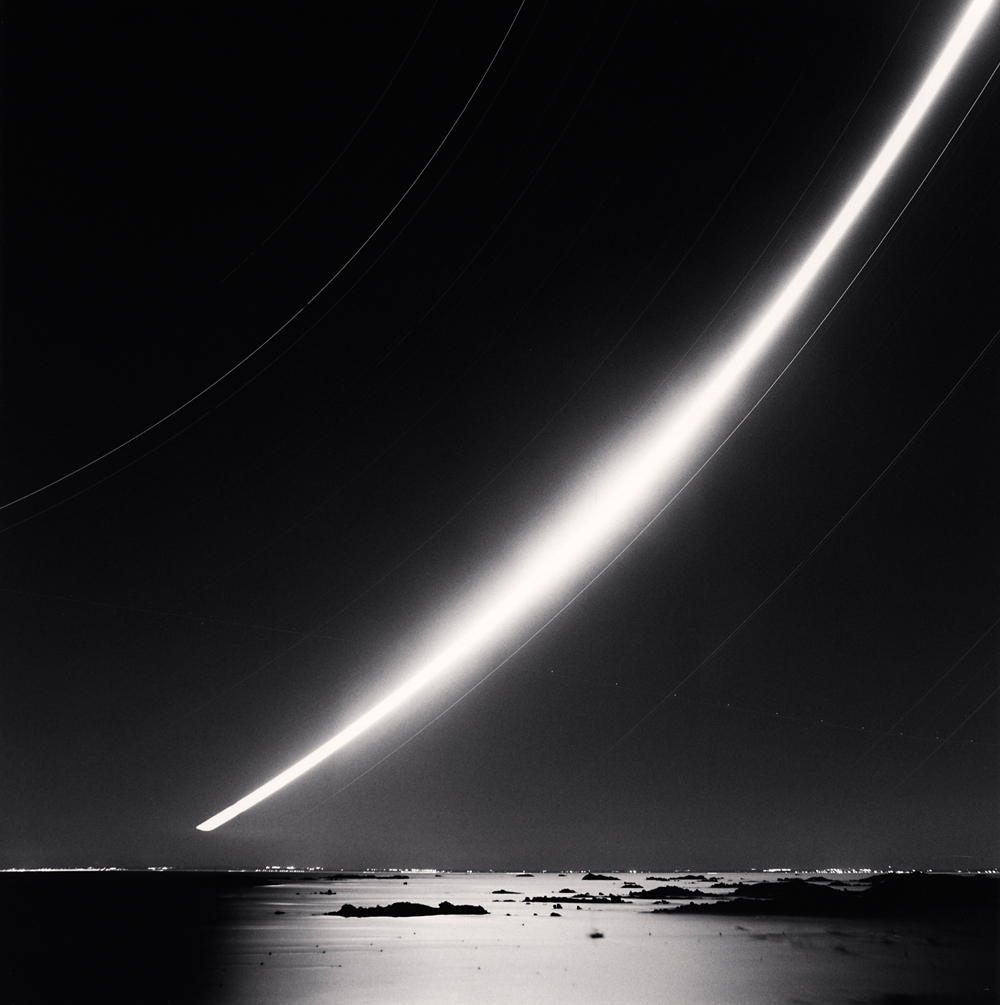
© Full Moonrise, Chausey Islands, France, 2007
Do you have any advice for someone that it is starting in the art world. What do you think is more important: studies or learning by experience? Do you believe there are certain academic degrees you need to become successful in this field?
I think that academic degrees are useful if one wants to teach or work in academic circles. I haven’t personally found that any letters after my name has influenced my career. I do think that experience, on the other hand, is vitally important. I hesitate to give any advice to others. Photography is an extremely broad area. I have found my way, but I wouldn’t suggest that others follow. The techniques and practices of photography have become so much more accessible in this digital era. There are more cameras, phones, computers and other digital recording devices coming to the market every day to help make images for us. Everybody is now a photographer. The competition is higher than ever. So, what differentiates one photographer from another? Why is one musician different from another? How does one writer seem to have something to say, a unique story to tell? What makes a dancer stand out above the rest? Nobody really knows and I have little wisdom for the new generation except general generic advice. I would advise anybody entering the photographic profession to be passionate about it, and to work to the absolute best of their ability. There is no substitute for practice and hard work. Be positive and open. Don’t try to be like somebody else, another photographer, for the sake of it. Learn from other photographers by all means, but think about what you enjoy and connect with what makes you an individual. Follow your own muse, find your own vision and voice, and have fun in the process. Time is fleeting, life is over before you know it. Appreciate every second of this amazing existence for we probably don’t get a second chance.
What particular work in your entire production did you enjoy the most and why?
This is impossible to answer. It is a bit like asking which of your children is your favorite! Let me say that no one project has been my favorite, so instead I will talk about one of many projects which I greatly enjoyed: JAPAN. My first trip there was in 1987, when I photographed the shrine and temple areas of Kyoto and Nara. I returned over the following several years for exhibitions, book signings and lectures, usually to Tokyo or to other metropolitan cities. However, my dream was to explore the landscape throughout Japan in Hokkaido, Honshu, Kyushu, Okinawa and Shikoku. This I began to do in 2000.
There is something mysterious and wonderfully alluring in the Japanese land. It is visually manifested in the omnipresent interactions between water and earth, and in the constantly changing seasons and skies. It can be felt in the engaging intimacy of scale in its terrain, and in the deep sense of history contained in its earth. There is reverence and honor towards the land, symbolized by the ubiquitous torii gates. The shrine is often an integrated part of the landscape, a place to rest and meditate, and perhaps to even escape for a few moments from the complications and noise of our fast-paced modern lives. Physically, Japan has similarities to my home country of England; relatively small, reserved, inhabited for centuries, surrounded by water, every patch of land and part of the sea-front containing a story. Japan is also a volatile place, sometimes unpredictable and potentially dangerous, with typhoons, earthquakes and tsunamis possible. It is a country where the land is alive and powerful, where the elements are strong. I believe that living in Japan accentuates an awareness of the fragility and beauty of our transient world.
I have found Hokkaido in the North of Japan to be a particularly intriguing place - gently seductive, dangerously wild and hopelessly romantic. Visually, it has been a paradise on earth for me, a veritable winter wonderland. Surrounded by water and home to exquisite lakes, graceful mountains and countless majestic trees, photographic subject matter continues to be ubiquitous. I feel the starkness of Hokkaido’s winters accentuates an awareness of one’s immediate environment. The reduction of sensory distractions, leafless trees, absence of color, eerie silences, demands a more concentrated and pure focus on the land. These conditions have been of the utmost importance in my ongoing creative process.
Working and traveling around this island during the past fifteen years has been an astonishing experience, particularly during the winter months when the landscape becomes transformed by layers of snow and ice into a graphic sumi-e painting, a visual haiku. The simple outlines of a fence as it threads it’s way up a hillside, the musical characteristics of snow barriers arranged like an empty musical score awaiting our notes, the melancholic nature of sunflowers surrealistically posing in the snow, the lace-like tracery of freezing ice encasing a lighthouse on the Sea of Okhotsk - the list could go on of the exquisite phenomena awaiting our eyes on this abstract winter canvas. I have felt a powerful emotional response to Hokkaido and have derived enormous creative inspiration in the light and atmosphere of this special place. I feel very fortunate and blessed to have spent a part of my life in Japan, and in Hokkaido in particular. I greatly look forward to many, many more visits there in the future.
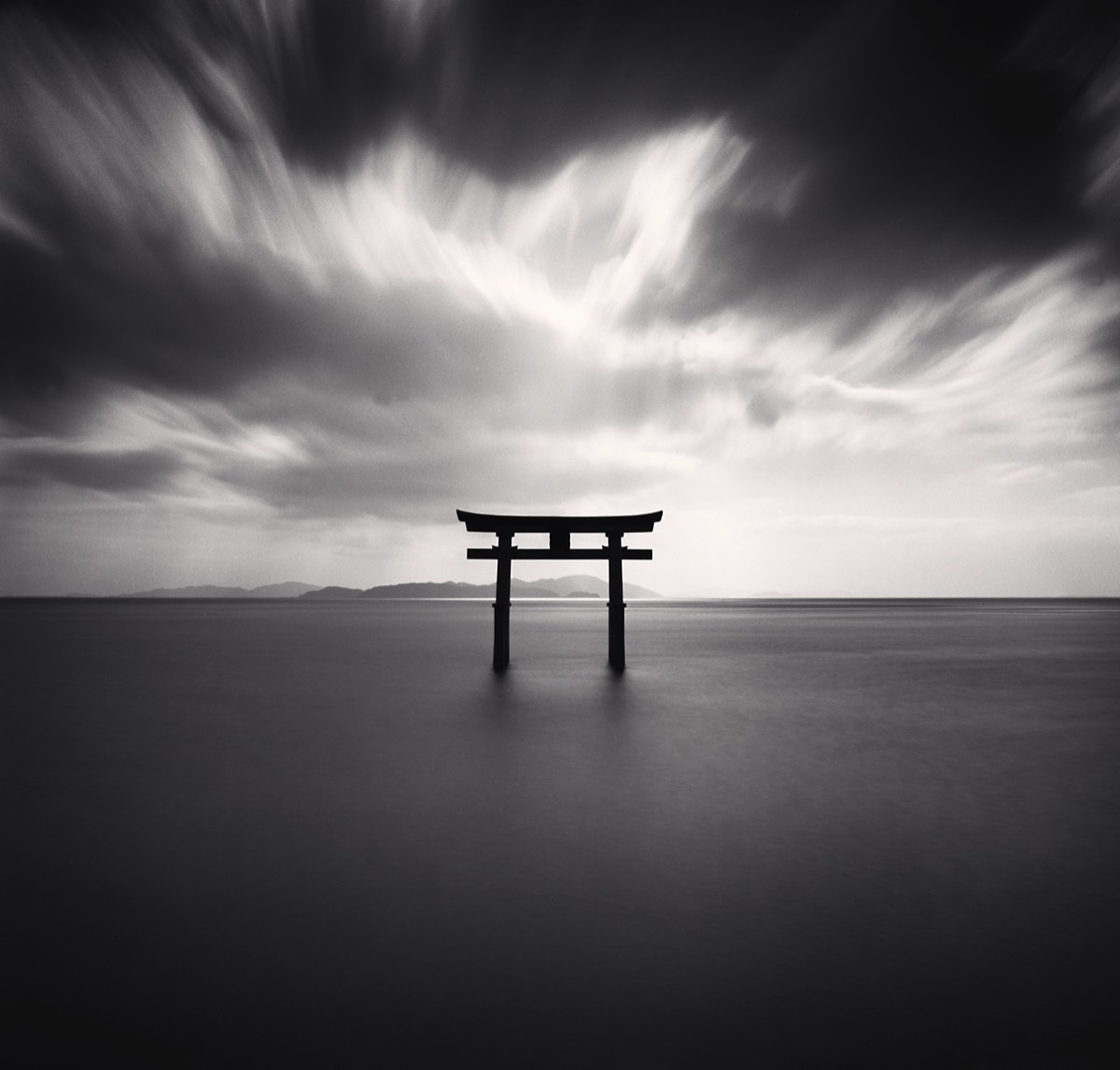
© Torii, Study 2, Takaishima, Biwa Lake, Honshu, Japan. 2007
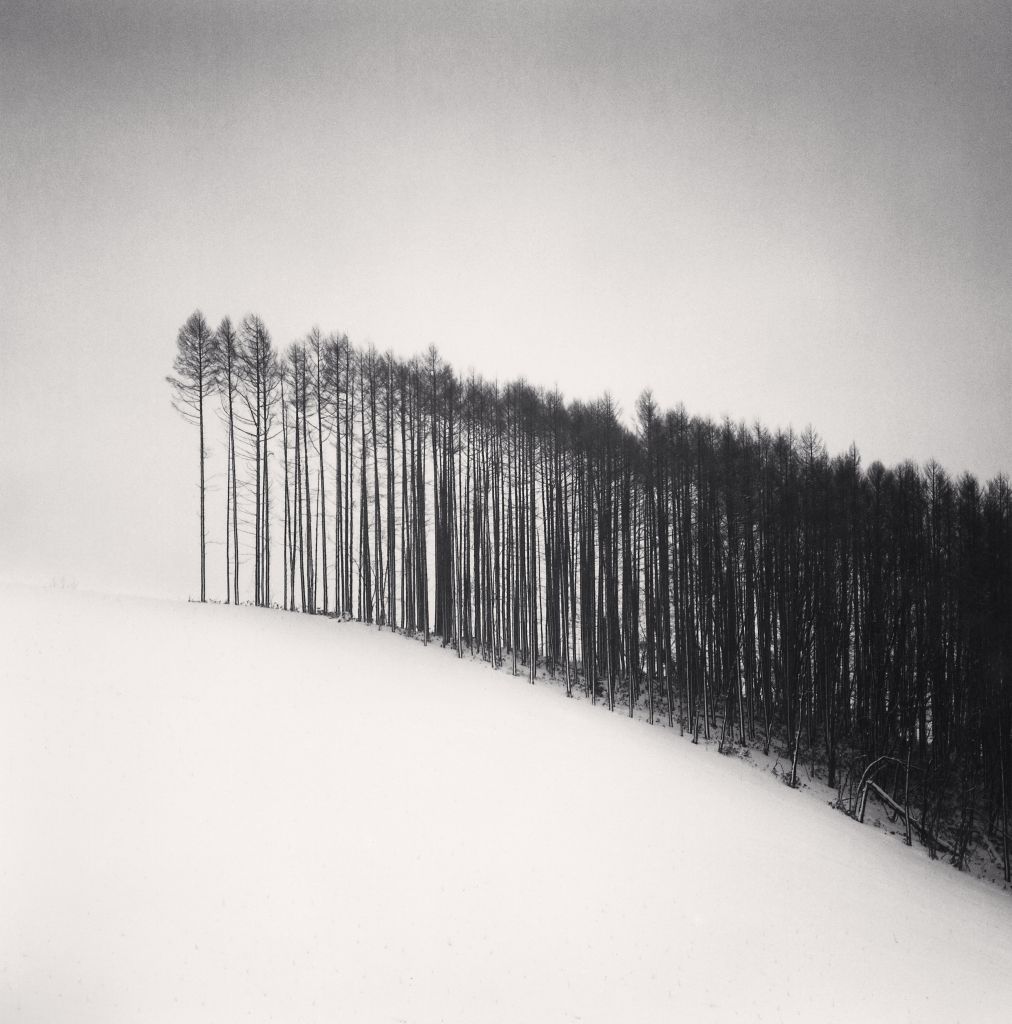
© Forest Edge, Hokuto, Hokkaido, Japan. 2004
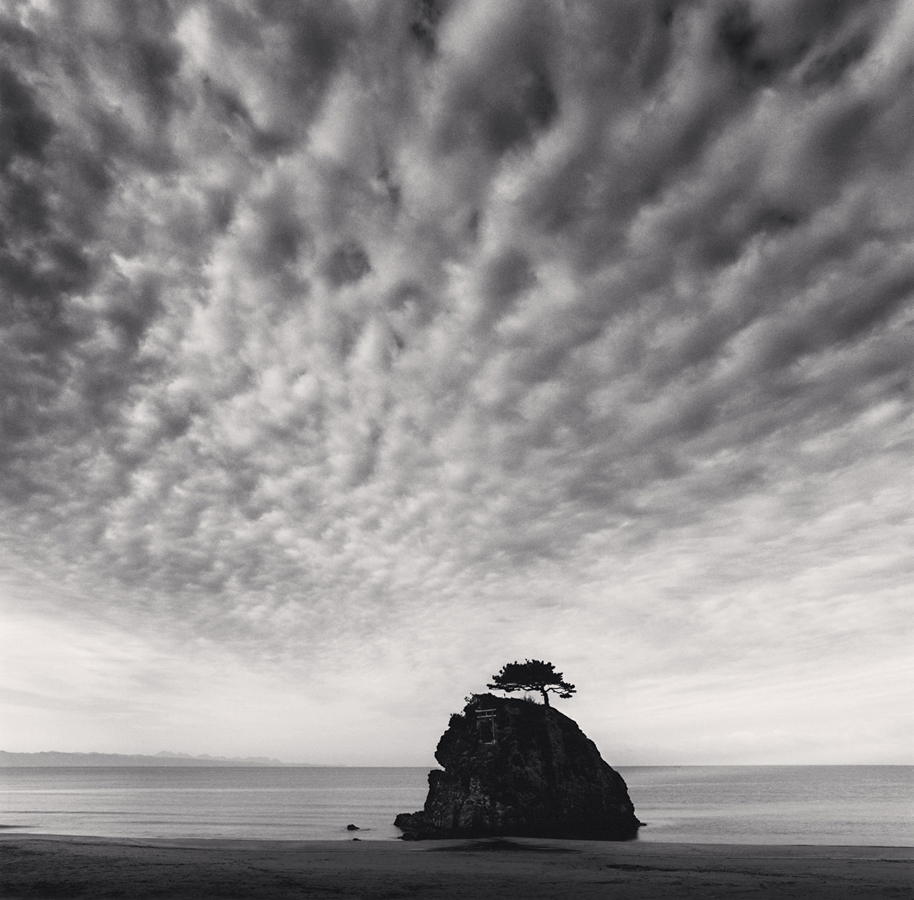
© Island Shrine, Taisha, Honshu, Japan. 2001
Which of your photographic series has had the most impact on you and why?
There seems to be an infinite amount of photographic possibilities in this world of ours. Decisions and choices have to be made as to what is meaningful and personally significant. I find that my interest in memories, time and change often dictate what attracts me to photograph. I sometimes think we choose some projects and others choose us. Probably the most memorable photographs I have made would be on the World War Two Nazi Concentration Camps in Europe. When I made these photographs between 1988-2000 I felt that I was in the right place at the right time with the appropriate training and vision. I didn’t feel that I had much of a choice. When I began to photograph this subject matter, the division between East and West was crumbling. I had access to Concentration Camps in Poland, Latvia, Czechoslovakia, East Germany, etc., which previously were very difficult to reach. These camps were potent with atmosphere and remnants of the past. I felt that I had to take advantage of the situation and photograph all that I could find before these places changed. I was not Jewish, I had no immediate connection to the camps, so perhaps I could see them differently. I photographed these locations with humbleness, respect and sadness for what had happened. I photographed in the same style that I photograph other subject matter. I felt that I should work to the best of my ability and do what I could to help keep the memory alive. For over ten years I searched out and explored all the camps I could. I then donated all the material, including the copyright to the negatives, to the French Ministry of Culture so that they could publish and exhibit the images. This project was my personal contribution to the Holocaust memory.
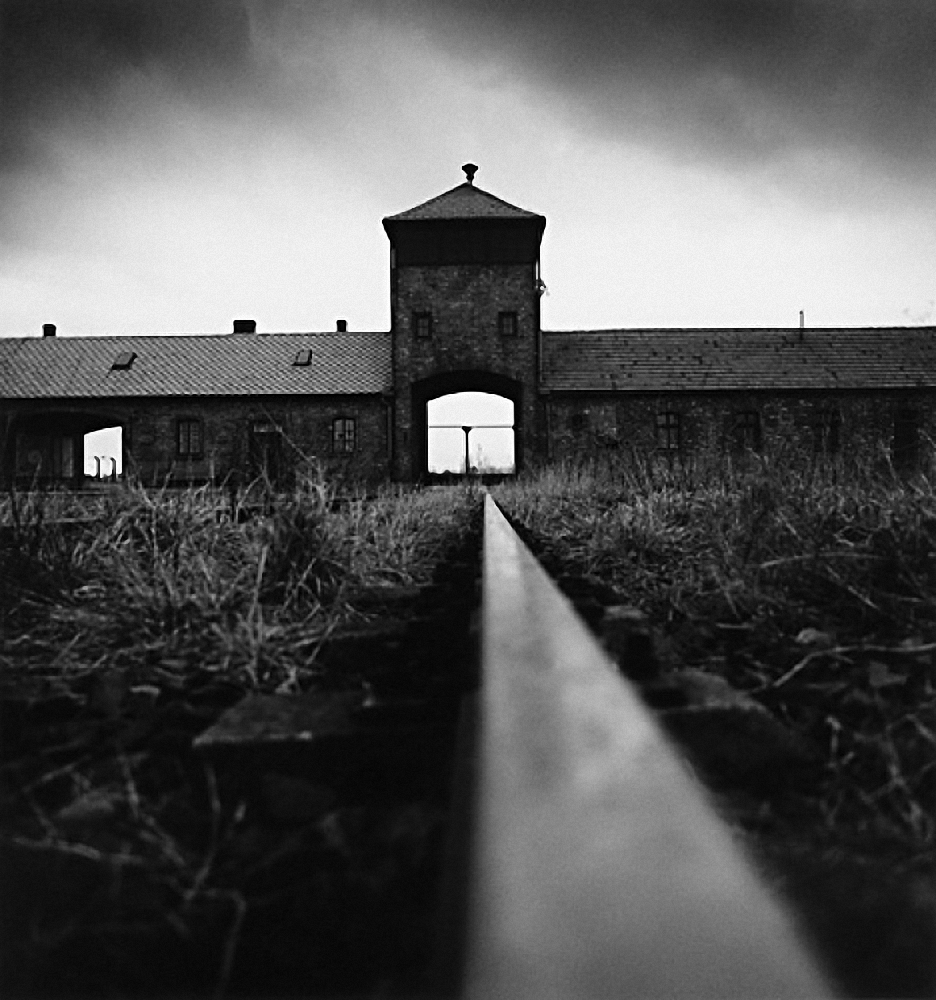
© Railway Lines and Entry Building, Birkenau, Poland, 1992
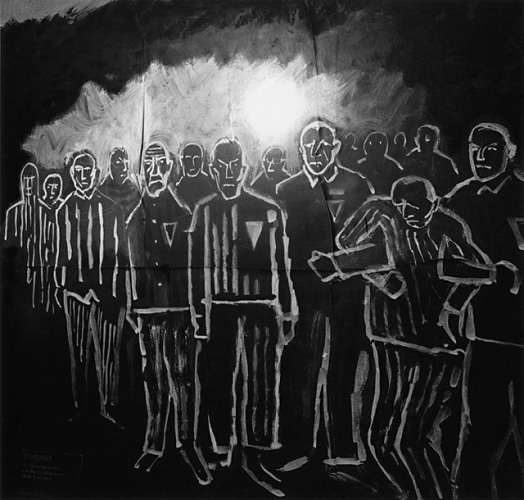
© Prisoner's Wall Drawings, Buchenwald, Germany, 1994
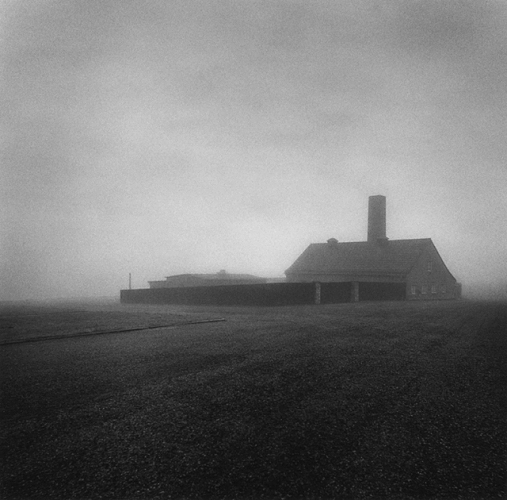
© Crematorium Building, Buchenwald, Germany, 1994
What interests you the most in the work of other photographers?
I have been influenced by many photographers, too many to list! I come out of a European tradition and my early masters were Eugene Atget. Bill Brandt, Mario Giacomelli and Josef Sudek, amongst others. These photographic giants, along with the Americans: Ansel Adams, Ruth Bernhard, Harry Callahan, Alfred Steiglitz, etc., have greatly influenced the way that I see and photograph. I suppose they are all romantics at heart, particularly the Europeans, all concerned with photographing a feeling as much as documenting external reality. Eugene Atget inspired me to photograph the Le Notre Gardens in and around Paris. His dedication to photographing Paris all his life taught me that nothing is ever the same, the same subject matter can be photographed in different ways and in different conditions. Bill Brandt took me back to the industrial towns in the North West of England - he showed me that beauty is very much in the mind of the beholder. I would go on to photographing power stations and factory interiors. His sense of drama, even melodrama, his use of atmosphere, his willingness to completely change reality into an abstract and graphic print, all helped my own vision. Mario Giacomelli’s sense of powerful two dimensional abstraction and design also profoundly affected me. Here was somebody who would use a thick marking pen to fill in black lines on the photographic print. I loved his liberation from the traditional “fine art photographic print.” Josef Sudek taught me that light can also emanate from within the subject matter rather than only illuminate the exterior. His images reminded me of infra-red studies. His commitment to photograph only Prague was also instructive. With all these photographers I actively searched out places they photographed, their camera angles and techniques. I’m a great believer in the saying attributed to Isaac Newton: “If I have achieved anything it is by standing on the shoulders of giants”.
What has been the biggest obstacle in your creative journey? How did you deal with it?
Time has been, and remains, the biggest obstacle in my creative journey. There has never been enough of it. I have tried to be as efficient as possible, but I am always frustrated that I never have enough time to do everything that I want to. Hence my desire to have a few clones to assist me!
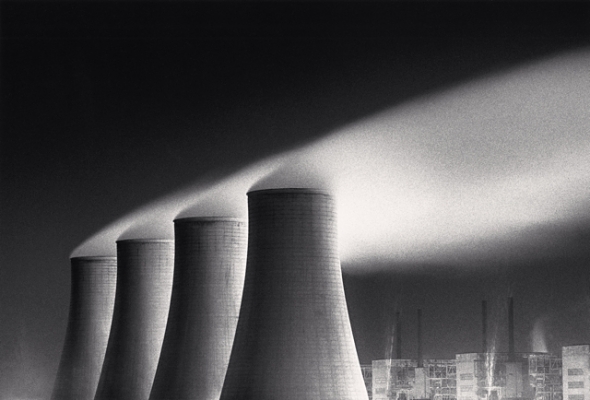
© Chapel Cross Power Station, Study 1, Dumfries, Scotland, 1985
Michael Kenna | Website




